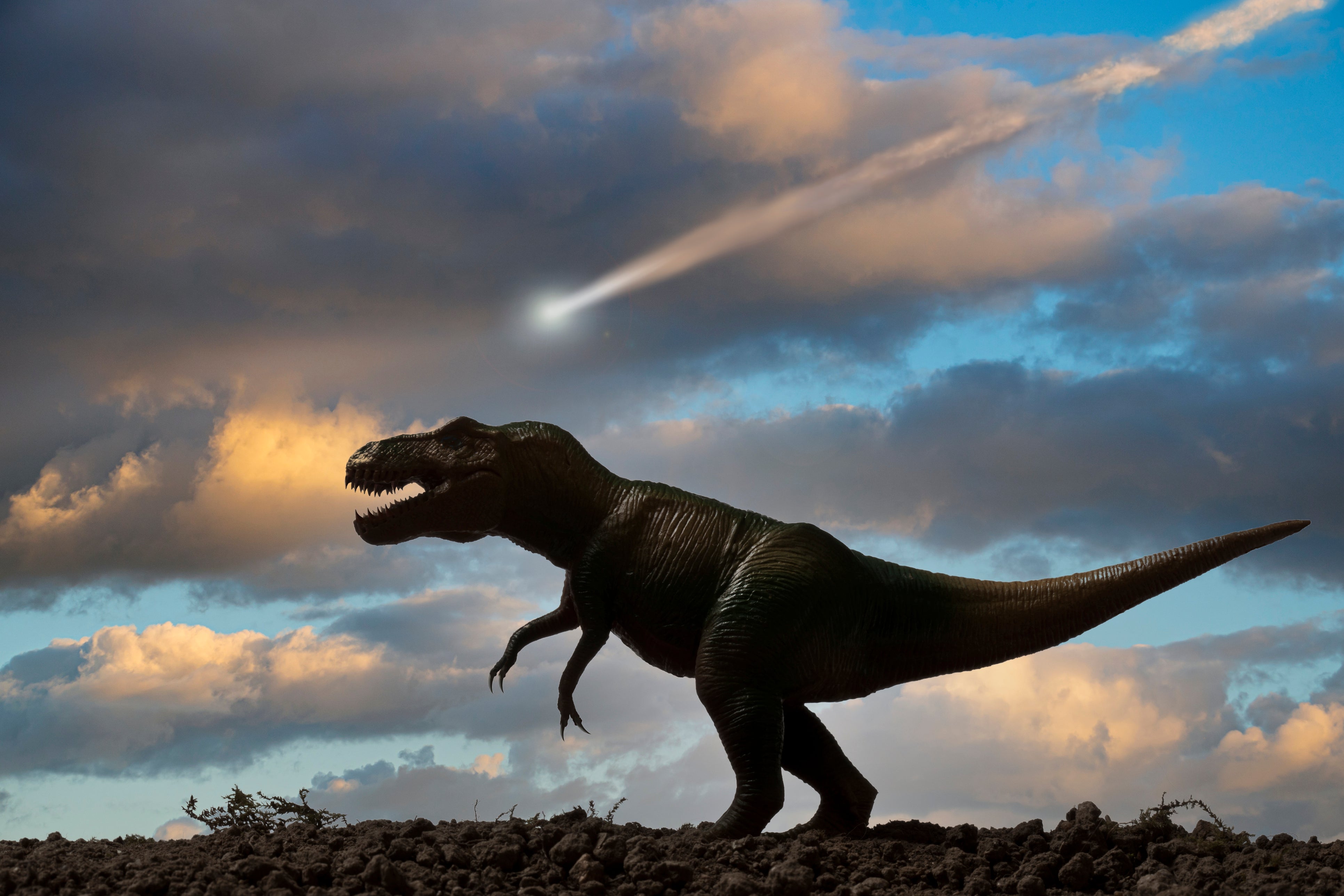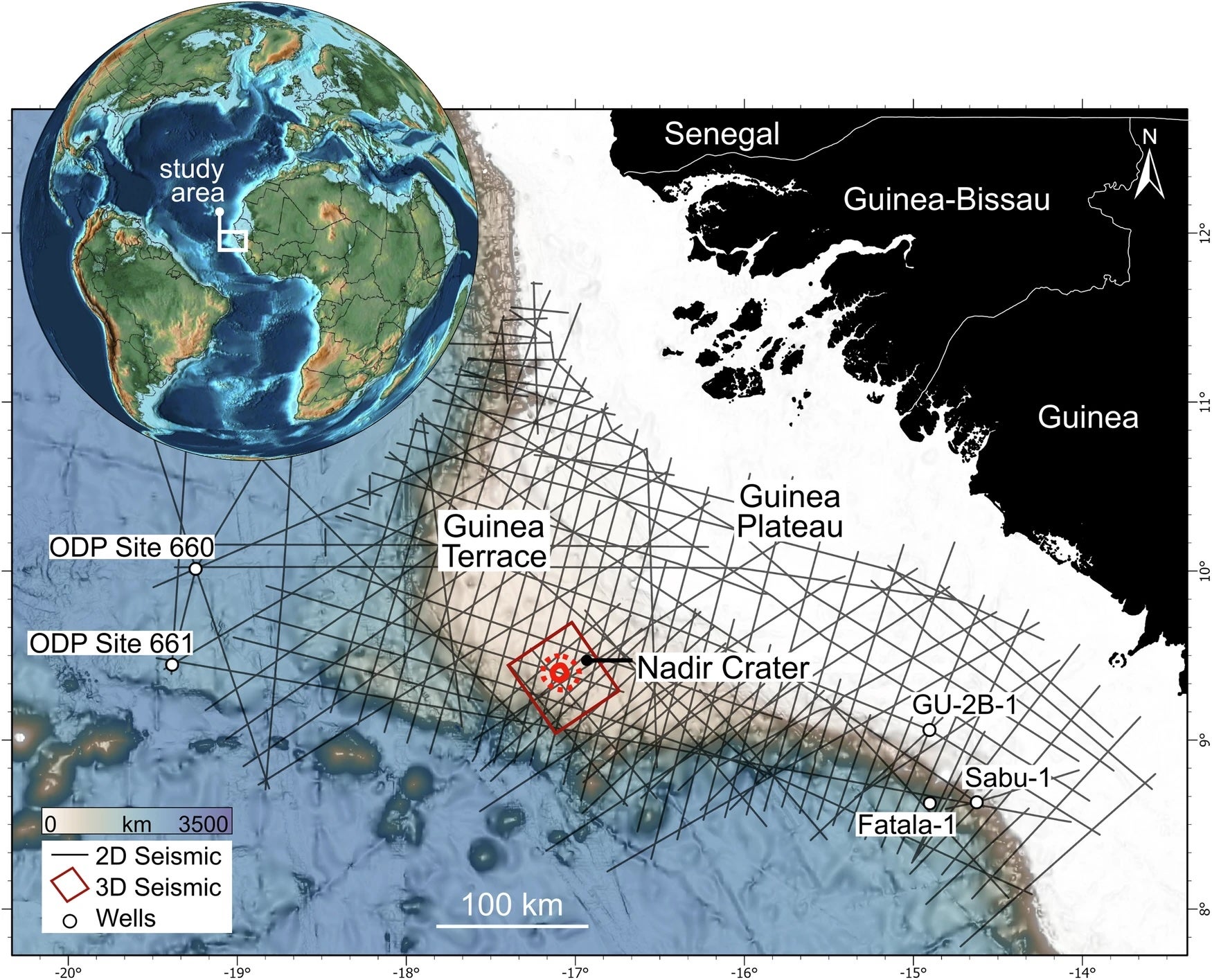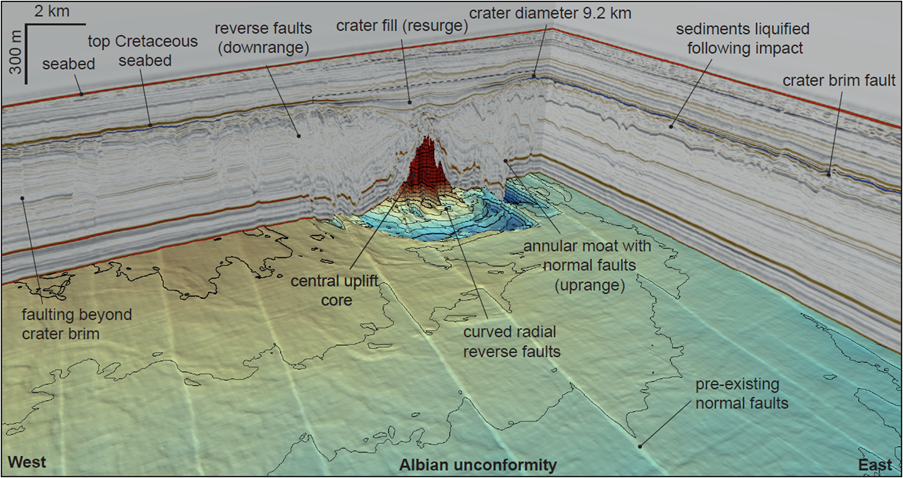The Independent's journalism is supported by our readers. When you purchase through links on our site, we may earn commission.
Scientists discover there wasn’t just one asteroid which killed dinosaurs – after 66 million years
Evidence of a second asteroid found off coast of West Africa
Your support helps us to tell the story
From reproductive rights to climate change to Big Tech, The Independent is on the ground when the story is developing. Whether it's investigating the financials of Elon Musk's pro-Trump PAC or producing our latest documentary, 'The A Word', which shines a light on the American women fighting for reproductive rights, we know how important it is to parse out the facts from the messaging.
At such a critical moment in US history, we need reporters on the ground. Your donation allows us to keep sending journalists to speak to both sides of the story.
The Independent is trusted by Americans across the entire political spectrum. And unlike many other quality news outlets, we choose not to lock Americans out of our reporting and analysis with paywalls. We believe quality journalism should be available to everyone, paid for by those who can afford it.
Your support makes all the difference.A six-mile-long asteroid, which struck Earth 66 million years ago, wiped out the dinosaurs and more than half of all life on Earth. The impact left a 124-mile-wide crater underneath the Gulf of Mexico’s Yucatán Peninsula.
And, until now, it had been assumed that the asteroid acted alone.
This week, scientists at Scotland’s Heriot-Watt University have published new three-dimensional images of a crater made by a second asteroid that hit Earth at around the same time off the coast of West Africa.
The 5-mile-wide Nadir Crater was found nearly a thousand feet under the floor of the Atlantic Ocean. Dr Uisdean Nicholson was part of the group that first found it a little over five years ago, but needed seismic data from the images to confirm what had made it.

“It reveals this crater in three dimensions for the first time – the first time we’ve ever been able to see inside an impact crater,” he told The Independent on Friday. The study was published Thursday in the journal Nature Communications Earth & Environment.
Craters are often destroyed or deformed by erosion and can be tricky to find because they’ve been buried for millennia. The data provided to Nicholson’s team, from the global geophysical company TGS, allowed them to see all of the crater’s characteristics.
“So, the crater itself is about 9,200m – that’s what we call the rim. That’s the main central part of the crater,” Nicholson explained. “And then there’s a wider set of concentric features, or circular features, around it that we call the brim. That’s, I think, about 22,000m in diameter. So, that’s where the sea … bed got collapsed back in.”

The asteroid that made the crater would have been larger than 1,300 feet wide, the scientists say. The closest that humans have come to seeing an asteroid this large crashing to Earth was in 1908, when a 164-foot-wide asteroid exploded over Siberia.
“We haven’t had anything like this in human history,” Nicholson said.
Entering Earth’s atmosphere, the asteroid would become a fireball approximately 24 to 25 times the size of the sun, generating an enormous explosion in the air that was about a thousand times larger than the 2022 volcanic eruption in Tonga. It also would have caused a 7.0 magnitude earthquake, creating a “train” of tsunamis emanating from the center of the impact.
Still, compared to the Mexican “Chicxulub” asteroid, the one responsible for wiping out the dinosaurs, it’s not as large in terms of the energy released.

Now, Nicholson hopes to test ideas about how the energy of the asteroid hit the area and what happened, as well as reconstruct the strike in more detail. The researchers want to drill down in the oceanfloor to get samples of the crater to try to understand all of this and more.
Until then, having the data in 3D helps tremendously. Nicholson compared these images to newer generation medical scans.
“It’s like going from one old x-ray to having a full CT scan of your entire body,” he said.

Join our commenting forum
Join thought-provoking conversations, follow other Independent readers and see their replies
Comments